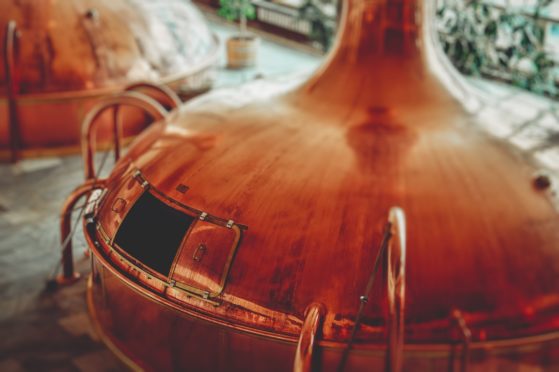One element in malt whisky-making we take largely for granted is copper.
The pot stills, pipes, worms or condensers where the wash is heated and the spirit vapour cooled are almost always made of copper.
With good reason. Copper is an excellent heat conductor and is slow to corrode. Best of all, it reacts and neutralises sulphur compounds, particularly weak acids, in the wash which would spoil the taste of the raw spirit and hence the matured whisky.
However, there is a price to pay. Years of heating the wash gradually eats away at the stills’ inner layer until it becomes so thin it can fracture or burst, causing major damage and danger to those in the stillhouse.
Therefore one “silent season” task was to gently tap with a small hammer all over the stills, listening for the louder tone indicating the metal was getting very thin. It was an imperfect test but experienced stillmen knew what to look and listen for.
With that in mind, pot stills were, and are, built with copper of varying thickness. The base would be made of 12 millimetre copper, the “boil zone” above it 6mm or 8mm and the neck and lyne arm in 4mm copper, all sections carefully brazed or riveted together.
How long does a still last? One abiding mystery of distilling is that stills in certain distilleries last 10 or 12 years whereas similar stills elsewhere survive for 30 years.
Replacing a pot still is a major task, involving a huge mobile crane and, more often than not, removing the stillhouse roof. It is costly, time-consuming and expensive. Which is why in recent years, most pot stills are built in sections bolted together with big brass flanges. If one section wears thin, it can be unbolted, removed and a new section installed quickly and relatively cheaply with little distilling time lost.
The ultimate quick-fit distillery is Diageo’s Roseisle in Moray. Its many flanged stills sit in two long rows with a central deep aisle where a telescopic forklift can remove the old and install the new sections within hours.
Why not replace copper with stainless steel? Steel is sometimes used for pipes and condensers but I suspect pot stills will forever be copper.










